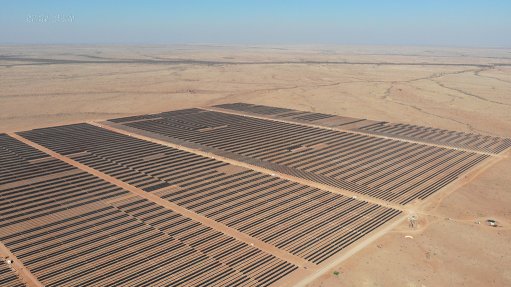Saab making maritime surveillance offer to SA
Should South Africa select the Saab 340 MSA twin turboprop maritime surveillance aircraft to re-equip the South African Air Force (SAAF), the company could have a baseline-configuration aeroplane in South Africa within six months of contract signature. So assures Saab South Africa president and CEO Magnus Lewis-Olsson.
While such an aircraft would be operational at a basic level of capability, it could also be fitted with South African sensors and systems to greatly increase capability and provide local content for the programme. “Acquiring a baseline aircraft would reduce foreign exchange expenditure, while adding as many South African systems as possible would support local industry and jobs and keep much of the programme expenditure within the country,” he highlights. “The key will be South Africa’s concept of operations – day operations only, or day and night operations? Is bad weather capability required? And so on. That would establish what sensors are required.” While the integration of South African systems onto the aircraft would obviously take time, this process could be carried out in South Africa.
The key reason why aircraft could be delivered to South Africa so quickly is that the Saab 340, originally developed as a 30-seat regional airliner, is no longer in production. Thus, complete aircraft are available for conversion to the maritime surveillance role. Saab has already carried out such a conversion to produce a demonstrator aircraft. This was exhibited at African Aerospace and Defence 2012 and its capabilities will be showcased again at Africa Aerospace and Defence 2014 in September.
More than 400 Saab 340 airliners are currently operational in 30 countries on six continents, including Africa. Civil 340s have been, and currently are, operational in Southern Africa. “A maintenance facility already exists is South Africa,” points out Lewis-Olsson. “Quite a few fly elsewhere in Africa, especially in Kenya. It’s a rugged aircraft. The 340 MSA is being marketed to other African countries as well.” It also has a low operational cost. “Very few such aircraft have a cost of ownership that comes close.”
For conversion to MSA standard, the airframe would be thoroughly refurbished to provide a 40-year life span in the maritime surveillance role (low-level flying over the sea). “The number of aircraft available is not an issue,” he affirms. “We can and will provide long-term support for this aircraft. It will remain in civilian service for many years to come. There are lots of spare parts available.”
Maritime surveillance aircraft are not to be confused with maritime patrol aircraft. The former monitor activities on the surface of the sea – shipping, fishing, offshore oil and gas rigs, recreational activities and so on – and are unarmed. Maritime patrol aircraft do this as well, but they can also carry out undersea monitoring activities by dropping sensors called sonobuoys (these are small active or passive sonar systems deployed from compact buoys, which radio the data being gathered to the aircraft orbiting above) and they are armed (at least with antisubmarine torpedoes, but often also with anti-ship missiles).
While maritime patrol aircraft can fulfil more roles than maritime surveillance aircraft, they are also significantly more expensive. “If you compare the price of maritime surveillance aircraft to that of maritime patrol aircraft, for any given budget, you can buy quite a few more of the former – and not just small aeroplanes – than of the latter,” he argues. “If you need to deploy antiship weapons, you could use the Gripen, which was designed to fulfil the antiship role. For South Africa today, the surface threat – for example, piracy, illegal fishing and poaching – is far higher than a sub- surface threat. And the best way to hunt a submarine is with another submarine.”
South Africa has a requirement for both maritime surveillance and maritime patrol aircraft. Saab is proposing that the SAAF acquire a maritime surveillance type first. “It would be quite an undertaking for South Africa to go straight from its current limited maritime surveillance capability to a full maritime patrol capability,” avers Lewis-Olsson. “In an investment climate like today, with a limited amount of money available, a maritime surveillance aircraft, working in cooperation with Gripens and naval vessels, could be very effective.”
Comments
Press Office
Announcements
What's On
Subscribe to improve your user experience...
Option 1 (equivalent of R125 a month):
Receive a weekly copy of Creamer Media's Engineering News & Mining Weekly magazine
(print copy for those in South Africa and e-magazine for those outside of South Africa)
Receive daily email newsletters
Access to full search results
Access archive of magazine back copies
Access to Projects in Progress
Access to ONE Research Report of your choice in PDF format
Option 2 (equivalent of R375 a month):
All benefits from Option 1
PLUS
Access to Creamer Media's Research Channel Africa for ALL Research Reports, in PDF format, on various industrial and mining sectors
including Electricity; Water; Energy Transition; Hydrogen; Roads, Rail and Ports; Coal; Gold; Platinum; Battery Metals; etc.
Already a subscriber?
Forgotten your password?
Receive weekly copy of Creamer Media's Engineering News & Mining Weekly magazine (print copy for those in South Africa and e-magazine for those outside of South Africa)
➕
Recieve daily email newsletters
➕
Access to full search results
➕
Access archive of magazine back copies
➕
Access to Projects in Progress
➕
Access to ONE Research Report of your choice in PDF format
RESEARCH CHANNEL AFRICA
R4500 (equivalent of R375 a month)
SUBSCRIBEAll benefits from Option 1
➕
Access to Creamer Media's Research Channel Africa for ALL Research Reports on various industrial and mining sectors, in PDF format, including on:
Electricity
➕
Water
➕
Energy Transition
➕
Hydrogen
➕
Roads, Rail and Ports
➕
Coal
➕
Gold
➕
Platinum
➕
Battery Metals
➕
etc.
Receive all benefits from Option 1 or Option 2 delivered to numerous people at your company
➕
Multiple User names and Passwords for simultaneous log-ins
➕
Intranet integration access to all in your organisation


















